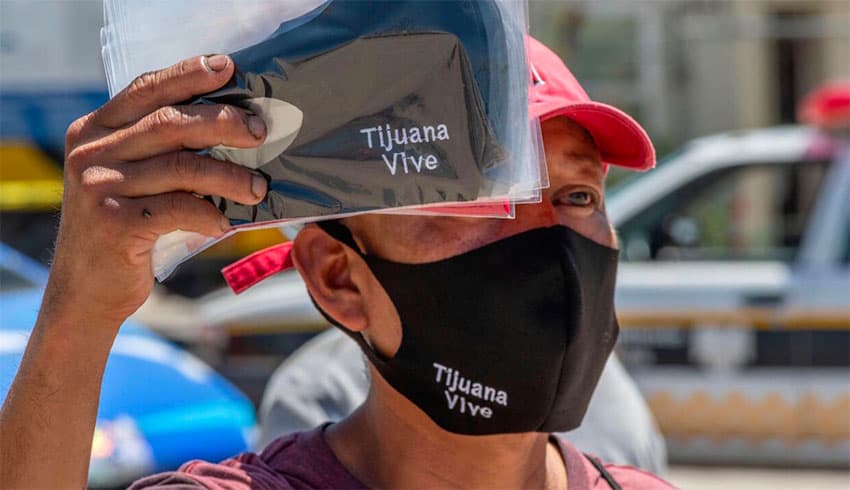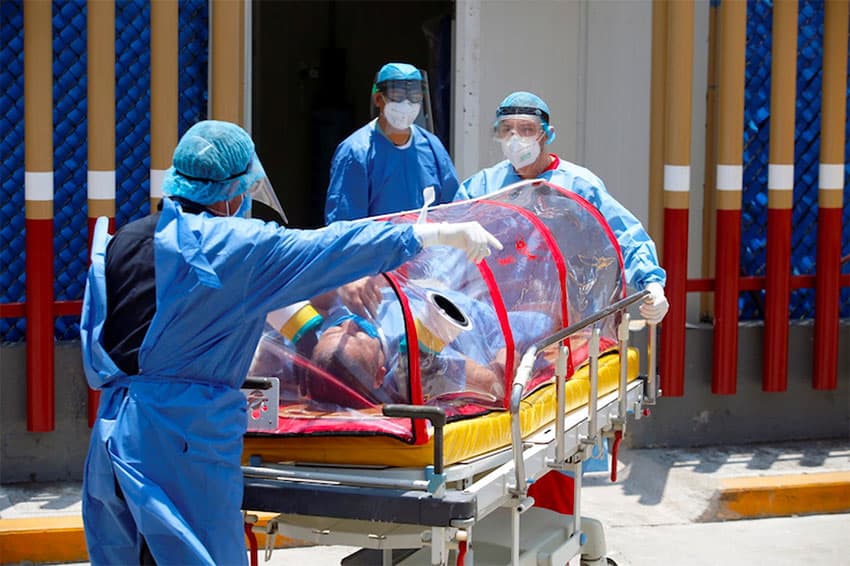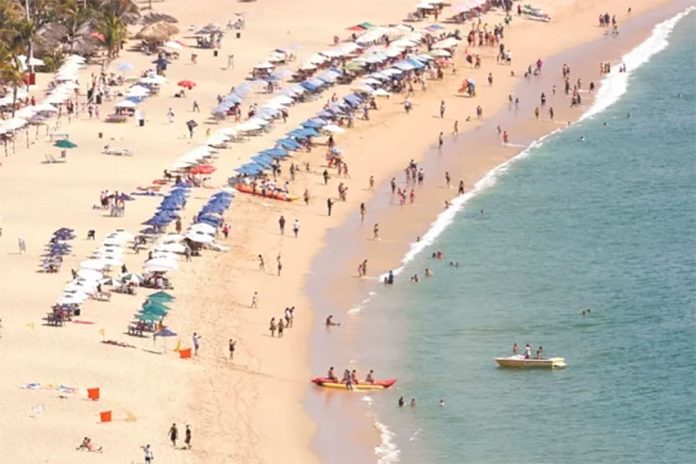The coronavirus situation in Guerrero will become critical in the coming days as a result of end-of-year celebrations and the influx of visitors, state authorities predict, while the situation is dire in Mexico City, where about 90% of hospital beds are currently occupied.
Guerrero Health Minister Carlos de la Peña Pinto said that a critical situation is expected in terms of new cases, hospitalizations and deaths.
“We’re already starting to pay the bill for what we lived during December,” he said.
About 600,000 tourists traveled to Guerrero over the Christmas-New Year vacation period, mainly descending on coastal destinations such as Acapulco and Zihuatanejo/Ixtapa, where restrictions were temporarily eased by the state government to allow hotels and restaurants to increase capacity. Many of the visitors came from the red light, maximum risk entities of Mexico City, México state and Morelos as well as Puebla, which is high risk orange on the federal stoplight map.
De la Peña said that hospitalizations increased in Guerrero in the first days of 2021, citing a 20% spike compared to December. He said that hospital occupancy had risen to 45% from a level of 25% that had been maintained since September.
Federal data shows that 60.5% of general care beds are currently occupied in Guerrero while 27.5% of those with ventilators are in use.
The state health minister said that 139 residents lost their lives to Covid-19 in the first 10 days of the year, including 19 on Sunday. Guerrero’s official Covid-19 death toll is currently 2,678 while its accumulated case tally is just over 27,000.
The federal Health Ministry estimates that there are just over 900 active cases in the state.
In contrast, there are an estimated 29,753 active cases in Mexico City, which has recorded almost 369,000 confirmed cases and 23,612 Covid-19 deaths since the start of the pandemic.
Mexico City government data updated Monday night shows that 6,581 coronavirus patients are in hospitals in the capital, including 1,611 in beds with ventilators. Hospital occupancy is 88%, according to city authorities, while federal data shows that 91.5% of general care beds and 86% of those with ventilators are taken.
“We’re at the highest peak of hospitalizations since the pandemic began and it continues to increase,” Mayor Claudia Sheinbaum said Monday. “It’s not about dramatizing [the situation] but acting. We’re continuing to increase hospital capacity and we’re calling … on citizens to comply with the red light measures.”

Sheinbaum said that hospital admissions had been higher than expected over the past four days, attributing the spike to end-of-year celebrations and the vacation period.
A study published in December by academics in Mexico and the United States predicted that the coronavirus outbreak in Mexico City would overwhelm the capital’s health system in January.
Warning that as many as 35,000 coronavirus patients could require a hospital bed at the same time in a worse case scenario, academics from Mexico City’s Center for Research and Teaching in Economics and Stanford University urged officials to prioritize “rapid hospital capacity expansion.”
Sheinbaum stressed Monday that capacity is being increased at several healthcare facilities, citing the Tláhuac General Hospital as one example.
In other Covid news:
• Public hospital doctors and nurses in Oaxaca issued a plea for the southern state to regress to red on the stoplight map. With an accumulated case tally of just under 30,000 and a Covid-19 death toll of 2,139, Oaxaca is currently high risk orange, according to the federal government system. A red light designation would require all nonessential businesses to close their doors.
Health workers in Oaxaca issued an urgent call to President López Obrador to send 10,000 Covid-19 vaccines to the state in order to immunize frontline workers at the 25 Covid hospitals. Federal health authorities announced Monday that the Pfizer/BioNTech vaccine would be distributed in all 32 states on Tuesday.
The secretary general of the Oaxaca branch of the national health workers union said that only 4,000 health workers were on the early vaccination list but urged that cleaning and cooking staff, among other hospital employees, should also be immunized due to the infection risk they face on a daily basis. Mario Félix Pacheco also said that most health workers haven’t had any time off since the pandemic began and many are tired. He called for the deployment of relief medical personnel in order to give tired workers a break.
• Municipal authorities in Tijuana, Baja California, signed off on fines for people not wearing face masks in public places. Scofflaws face the prospect of having to pay between 434 and 1,303 pesos (US $22 to $659) if they are caught without a mask.
Councilor José Cañada García noted that Baja California is currently red on the stoplight map and that hospitals and funeral services are overwhelmed. He asserted that the aim of fining people for not wearing masks is to protect people’s health, not raise money for the Tijuana government. Funds collected via fines will be used to buy face masks to distribute to residents, Cañada said.
Baja California Governor Jaime Bonilla was critical of the approval of fines in the state’s largest city, saying that mask use should be encouraged but not made mandatory. That view is consistent with that of López Obrador, who founded the Morena party Bonilla represents, and seldom wears a mask himself.
Baja California has recorded more than 37,000 confirmed coronavirus cases and 5,951 Covid-19 deaths since the start of the pandemic. Tijuana ranks first for deaths among the state’s five municipalities and second for cases behind Mexicali.

• Authorities in Veracruz announced that tighter restrictions on people’s movements will apply in 12 municipalities for four days this week.
Governor Cuitláhuac García said Monday that a decree that will apply Thursday through Sunday in eight municipalities currently red on the state stoplight system and four municipalities that are orange. The decree detailing the exact measures was due to be published on Tuesday.
The municipalities where the tighter restrictions will apply are Actopan, Cazones, Papantla, Tecolutla, Espinal, Gutiérrez Zamora, Tihuatlán and San Rafael, all of which are red, and Poza Rica, Veracruz, Xalapa and Orizaba, which are orange.
As is the case in some other states, Veracruz has used its own stoplight system to set restrictions rather than that developed by the federal government. The Gulf coast state is currently medium risk yellow on the federal map, having switched to that color from low risk green on December 21.
Veracruz has recorded more than 45,000 coronavirus cases since the start of the pandemic and 6,391 Covid-19 deaths. According to federal data, hospital occupancy in the state is 41% for general care beds and 34% for those with ventilators.
• Nuevo León Health Minister Manuel de la O Cavazos said that a case of coronavirus very similar to the more contagious strain first detected in the United Kingdom in September had been found in the northern state. He said the case was 96% similar to the B117 strain, which U.K. authorities said is up to 70% more transmissible. The health minister said that a sample was sent to a federal lab and that federal authorities will determine whether the case is of the new strain or not.
Mexico’s first known case of the new strain was detected in a U.K. citizen who traveled to Matamoros, Tamaulipas, via Mexico City late last year.
Source: El Universal (sp), Milenio (sp)
